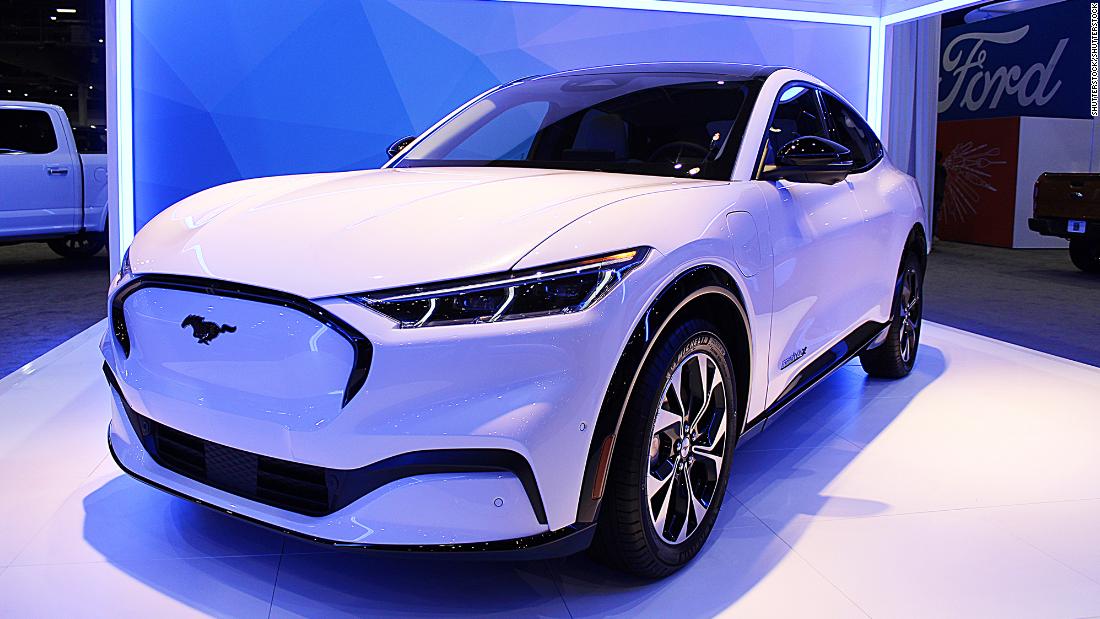Morgan Stanley’s analysis shows that Tesla’s share of the US EV market fell to 69% in February, from 81% a year ago.
Tesla’s US sales are still rising, according to this analysis, due to the increased appetite among US auto buyers for electric vehicles. Morgan Stanley estimates that industry-wide EV sales in the U.S. increased 34% in February, compared to the previous year, even though sales of traditional internal combustion engine vehicles fell 5.4%, according to the analyze.
Tesla (TSLA) reports only global quarterly sales, not monthly or US sales, as many other automakers do. Tesla probably saw a 5.4% gain in US sales in February, according to Morgan Stanley’s analysis.
New electrical offerings from traditional automakers have resulted in their combined EV sales in the U.S. more than doubling to 9,527 vehicles. And Ford’s Mach-E, which won the SUV honors of the year this year and started deliveries in late January, accounted for 3,739 February sales, according to figures from the Ford (F).
“Mach-E was responsible for almost 100% of the [Tesla] loss of shares, “said Adam Jonas, an automotive analyst at Morgan Stanley, in a note earlier this week.
Other experts said they also believe Tesla is losing some of its share of the EV market.
“We’ve been waiting for this for some time,” said Michelle Krebs, senior analyst at AutoTrader. “Tesla was the only game in town. Now it is not. We expect Tesla’s sales to increase as the market grows, but there will also be theft of Tesla’s market share.”
A Ford spokesman declined to comment directly on Morgan Stanley’s analysis. The company said 70% of Mach-E buyers were new to Ford, making the car much more valuable to the automaker. More than 20% of Mach-E sales came from California, where the Tesla is particularly popular.
Tesla is facing competition from automakers like Porsche, BMW, Audi and Jaguar for its luxury S-model sedan and Model X SUV, along with competition from Chevrolet, Hyundai, Kia, Volkswagen, Nissan and now Ford for its lower-priced Model 3 sedan and Model Y SUV.
But Model 3 and Model Y are now the mainstay of Tesla’s sales, accounting for about 90% of its global sales in the fourth quarter.
Tesla did not respond to a request for comment on Morgan Stanley’s analysis.
Tesla is already behind Volkswagen (VLKAF), the world’s second largest automaker in sales of electric vehicles in many European markets, including Norway, where EVs now account for the majority of new vehicle sales.
And it is facing a new competition of General Motors (GM), which has just launched a compact SUV version of its US EV, the Chevrolet Bolt. The Bolt EUV will go on sale in early summer, along with a new version of the current Bolt hatchback. Both will have prices below Model 3 and Model Y.
And this is just the beginning of a wave of new EVs promised by traditional automakers in the years to come. Volvo announced this week that it will only offer electric vehicles by 2030, while Ford said it will only sell electric passenger cars in Europe by 2030. GM said it expects to sell only emission-free vehicles by 2035.
Aggressive targets in electric vehicles are driven both by tougher environmental regulations around the world and by the growing appetite for EVs among buyers.
And while EVs are now more expensive to build than comparable gasoline-powered engines, improvements in economies of scale are likely to reduce the cost of parts, including large batteries, it is less expensive and therefore more profitable to build EVs. Electric vehicles have fewer moving parts and, according to a Ford estimate, require 30% less manpower hours to assemble than traditional cars.
.Source
Related
